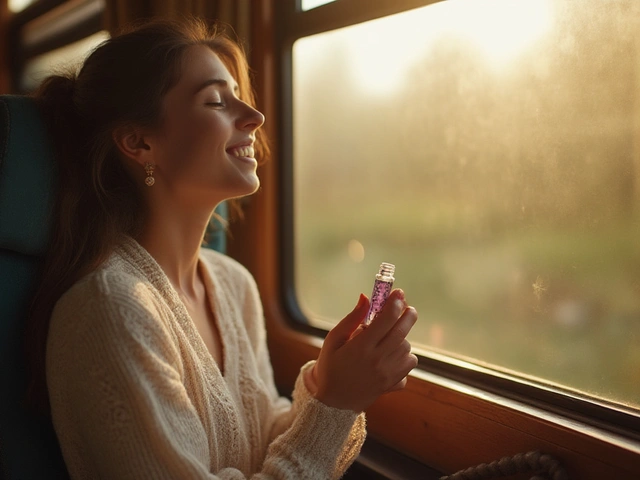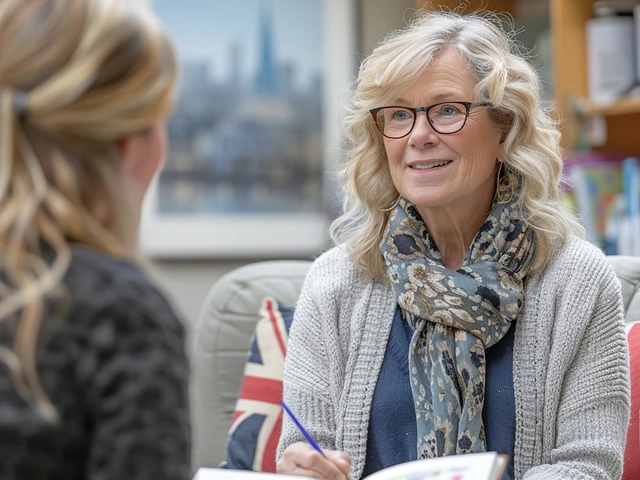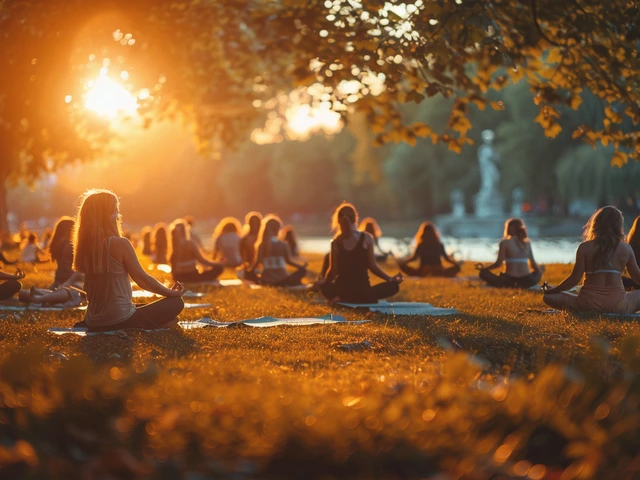Imagine a world where the scent of lavender can lull you into a restful sleep, or a hint of peppermint can invigorate your senses during a midday slump. Welcome to the world of aromatherapy—a natural and holistic approach to enhancing well-being through the power of scent.
Aromatherapy has been around for centuries, tapping into the profound healing properties of plant-derived essential oils. It's a gentle art that balances mind, body, and spirit, offering subtle yet powerful transformations.
If you're curious about starting your own aromatic journey, you've come to the right place. This guide will walk you through the essentials, from understanding which oils to choose to how to use them safely and effectively. Ready to let your senses embark on a healing adventure?
- Understanding Aromatherapy
- Essential Oils and Their Benefits
- Basic Tools You Need
- Safety Tips and Best Practices
Understanding Aromatherapy
Aromatherapy is a delightful fusion of science and nature, grounded in the art of utilizing naturally extracted aromatic essences from plants to balance, harmonize, and promote the health of body, mind, and spirit. This practice isn't just a modern wellness trend; it has roots steeped deep in history and has been revered in cultures across the globe. From ancient Egyptian rituals to traditional Chinese medicine, the use of essential oils has always been cherished. These oils are the lifeblood of the plant, containing potent chemicals that influence both physical and emotional states.
It's fascinating to consider how these tiny bottles of essential oils can exert such a profound impact. Each oil targets specific needs: for instance, lavender is renowned for its calming properties which can soothe your mind, while eucalyptus is a fantastic respiratory aid during those cold winter months. As you breathe in these different fragrances, the olfactory neuroreceptors in your nose carry the molecules straight to the brain, unlocking responses that can ease stress or uplift your mood.
"Aromatherapy can be considered a bridge between the realm of scents and the emotional aspects of our daily lives," notes esteemed aromatherapist, Gabriel Mojay.
The transformative essence of aromatherapy lies in its versatility. Whether through inhalation, topical application, or even diffused into the air, the methods are adaptable to fit seamlessly into everyday life. However, it's important to note that these essential oils must be used with care. Their natural potency requires attention to dosage and application methods to ensure safety and effectiveness. This is where the art meets the science, as understanding proper use is key to reaping the benefits without unpleasant side effects.
Interestingly, each essential oil carries its unique frequency, which can affect your personal energy fields in different ways. For those skeptical of its efficacy, scientific research is beginning to back up what traditional practitioners have known for years: aromatherapy is more than just a pleasant scent. It's a functional therapy with potential benefits ranging from improved sleep, enhanced mood, to alleviating symptoms of chronic conditions such as anxiety and depression. These benefits can be harnessed by anyone willing to explore and experiment with what nature has to offer.
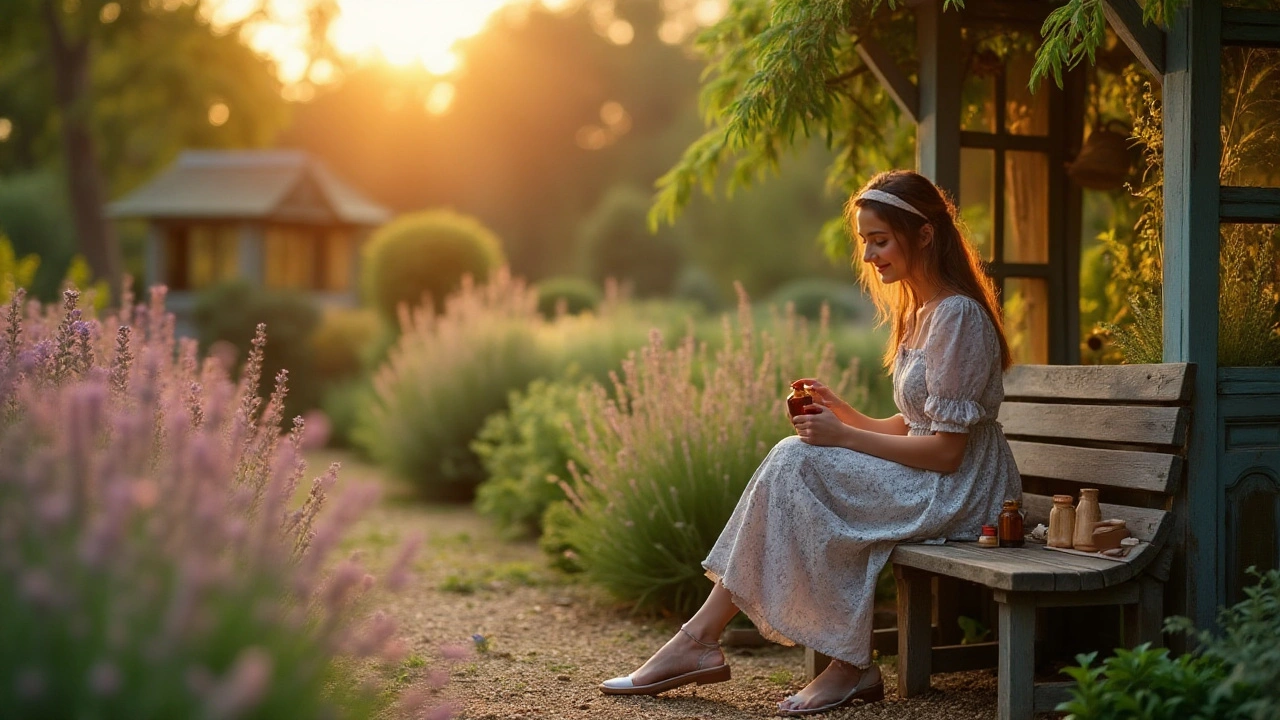
Essential Oils and Their Benefits
Delving into the world of essential oils is like opening a treasure chest of nature's precious offerings. Each oil carries with it a unique scent and a potent power that can uplift, soothe, invigorate, or calm the mind and body. Whether you are seeking to ease anxiety or elevate your mood, there is an essential oil for every purpose. The beauty lies in their versatility and the plethora of benefits they bring. Take lavender oil, for example. Known for its calming and relaxing properties, lavender is often used to improve sleep quality. A few drops on a pillow can transport you into a sanctuary of rest and relaxation, making it a favorite bedtime ritual for many.
On the other hand, if you're in need of something to refresh your senses during the hustle and bustle of the day, peppermint oil is your go-to. Its crisp and invigorating aroma acts like a breath of fresh air, sharpening focus and boosting energy. That's why many use it as a midday pick-me-up or to aid concentration during study sessions. Lemon oil, too, stands out with its bright, refreshing scent. Apart from its well-known cleansing properties, it also serves as a wonderful mood enhancer—perfect for lifting spirits on a grey day.
The benefits of essential oils extend beyond just emotional well-being. Eucalyptus oil, with its medicinal scent, is often used to relieve cold symptoms by clearing nasal passages. The impact is immediate, providing a sense of relief and balance in breathing. Meanwhile, tea tree oil, sometimes dubbed the 'jack-of-all-trades' of essential oils, is renowned for its antibacterial and antifungal properties. It's a popular choice for skincare, particularly for acne-prone skin. It’s fascinating how these natural extracts, each meticulously crafted by nature over time, can cater to diverse needs.
Here's a curious tidbit: a survey conducted by the American College of Healthcare Sciences found that lavender oil had a significant calming effect on patients before surgery, reducing feelings of anxiety by an impressive margin. Even the scientific community is paying close attention to the profound impact these oils can have, transcending anecdotal evidence to offer measurable results.
"Essential oils provide more than just pleasant odors; they bring therapeutic benefits to our daily lives by harnessing the natural essence of plants," notes Jane Buckle, RN, PhD, a pioneer in clinical aromatherapy.
It's easy to feel overwhelmed with the variety of oils available, but understanding their core benefits is the first step to harnessing their power. Whether you seek mental clarity, physical comfort, or emotional balance, there is no shortage of choices ready to meet your needs. So go ahead, breathe in deep and allow these natural wonders to redefine your wellness journey.
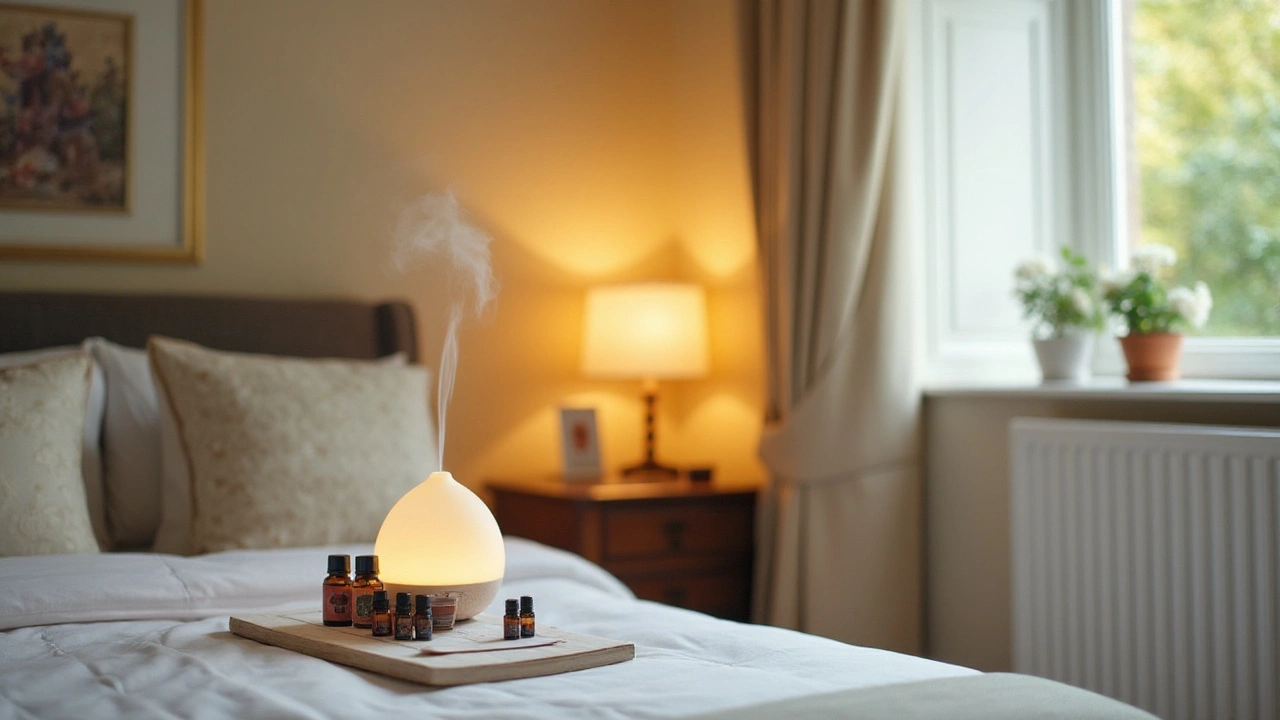
Basic Tools You Need
Embarking on your journey into aromatherapy can be both exciting and daunting. One of the first things to consider is the basic tools required to ensure a safe and fulfilling experience. Essential oils are potent, and using them correctly is key to unlocking their full potential. The good news is that it doesn't take much—just a few essential tools—and you're set to start experimenting with the calming and invigorating powers of these natural wonders.
A diffuser is often a must-have tool for beginners. These devices come in various types, including ultrasonic and nebulizing diffusers. Ultrasonic diffusers use water to create a fine mist, distributing the aroma throughout the air. This type is especially good for adding humidity to the environment. Nebulizing diffusers, on the other hand, don't require water. They work by dispersing essential oil particles directly into the air, offering a purer scent experience. Choosing the right diffuser depends on your needs and preferences, such as whether you want added moisture in your air or a more intense fragrance.
In addition to a diffuser, having a few essential oils on hand is crucial. Popular choices among beginners include lavender, peppermint, and eucalyptus. Lavender is renowned for its relaxing properties and is often used to promote restful sleep. Peppermint is stimulating and can help clear the mind, making it perfect for studying or working. Eucalyptus is known for its respiratory benefits, especially during cold seasons. Investing in a starter kit with these basic oils provides a solid foundation to explore the many possibilities of aromatherapy.
Do not overlook the importance of carrier oils. Since many essential oils cannot be applied directly to the skin, carrier oils help dilute them, allowing safe application. Popular options include jojoba oil, which closely resembles the skin's natural oils, and sweet almond oil, which is gentle on the skin. Carrier oils also aid absorption and can enhance the therapeutic benefits of essential oils. You’ll want a small collection of these to match the different oils you use.
A simple tool but often forgotten is a set of glass bottles, specifically dark-colored bottles. These are essential for mixing and storing your oil blends. The dark color protects the essential oils from light exposure, which can degrade their quality. Pipettes or droppers are also handy, as they ensure precision in the mix ratios, maintaining the integrity and safety of your blends.
Beyond tools, a well-rounded beginning library is a valuable asset. Consider acquiring a book on aromatherapy recipes and blends. Such a book offers insights and expert tips on mixing oils, understanding their properties, and can inspire creativity. You might find it useful to keep a journal or notebook specifically for your aromatherapy experiments—a place to jot down your favorite blends, what works, and what doesn’t.
According to prominent aromatherapy expert Julia Lawless, "The art of combining oils is a long-established practice steeped in tradition, and understanding it can greatly enhance the benefits you experience."
With these basic tools in hand, you’re equipped to explore the enriching world of aromatherapy. Whether it's that first relaxing blend to end a stressful day or a refreshing citrus concoction to start your morning, these tools will help you create the environment and experiences you seek. Plus, the process of discovering what combinations of scents and oils work best will be part of the rewarding journey into a new realm of wellness and self-discovery.
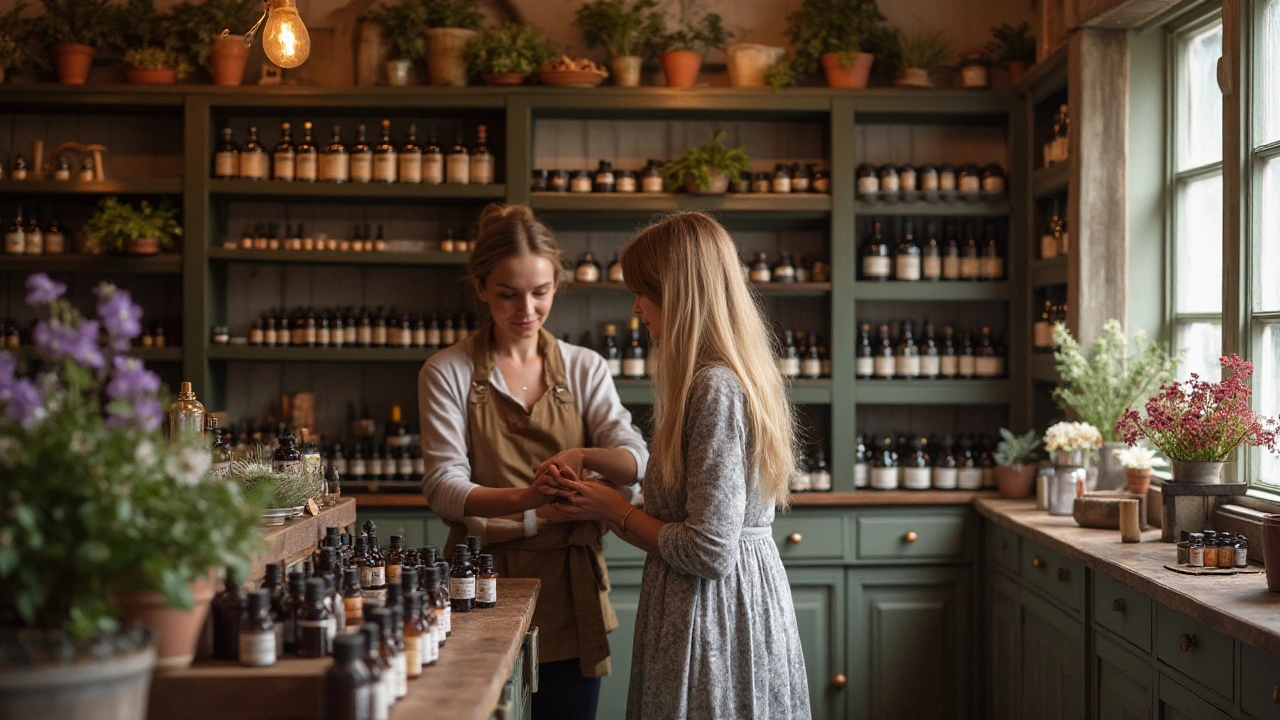
Safety Tips and Best Practices
Diving into the world of aromatherapy is indeed an exciting endeavor, yet it's crucial to approach it with caution to ensure a safe and joyful experience. Essential oils are nature's potent elements, and while their benefits are vast, their concentrated nature demands respectful handling. To start, always remember the golden rule: essential oils are for external use only unless under expert guidance. Inactive receptors in some individuals may be sensitive, so it's vital to conduct a patch test before full use. Simply apply a small amount diluted in carrier oil on your forearm and observe for any reactions.
Understanding dilution is a foundation of safe practice in aromatherapy. Essential oils are mighty, and diluting them before application can prevent adverse reactions like skin irritation or sensitization. Generally, a concentration of 1-2% is safe for adults, which translates to about 3-6 drops of essential oil per 30ml of carrier oil. For children and the elderly, a 0.5-1% dilution is more appropriate. Being mindful of these guidelines can make all the difference between a healing experience and discomfort.
Essential oils offer numerous benefits, but not all oils suit every situation. Oils like lavender and chamomile are gentle and generally regarded as safe for most individuals. However, oils such as oregano or cinnamon bark can be irritating and should always be used with caution. A fascinating fact to note is that some citrus oils can increase your skin's sensitivity to sunlight, potentially causing burns or pigmentation, which highlights the importance of reading each oil's properties thoroughly. Knowledge, indeed, is power in the world of natural healing.
Storing your essential oils properly can maintain their efficacy and extend their shelf life. Store them in a cool, dark place, away from heat and sunlight, to maintain their therapeutic properties. Dark glass bottles are essential, as they protect the oils from light degradation. Never use plastic containers as they can deteriorate over time, contaminating the oils. Check for changes in smell, texture, or color regularly, and dispose of oils that seem off to avoid losing the amazing benefits they offer.
"The key to wellness is to accept personal responsibility for your health and well-being." - Jillian Michaels
When venturing into aromatherapy, awareness about allergies or sensitivities to certain oils is vital. For instance, someone with a ragweed allergy might react to chamomile due to a shared compound. If in doubt, consult with a healthcare professional or an experienced aromatherapist. Taking these steps ensures you're harnessing the full potential of these natural treasures. For those with underlying health conditions, like asthma or epilepsy, it's wise to tread carefully. Some oils can be stimulating and may interact with medical conditions or medications.
Lastly, use caution with essential oils around pets, as some can be toxic to animals. Oils such as tea tree, peppermint, and citrus can pose health risks to cats and dogs. If you're committed to using oils in a pet-friendly home, ensure good ventilation and consult with a vet to ensure safe usage. Respectful handling, thorough research, and cautious application make the journey into aromatherapy fruitful and enjoyable, enriching life with wellbeing and aromatic joy.


